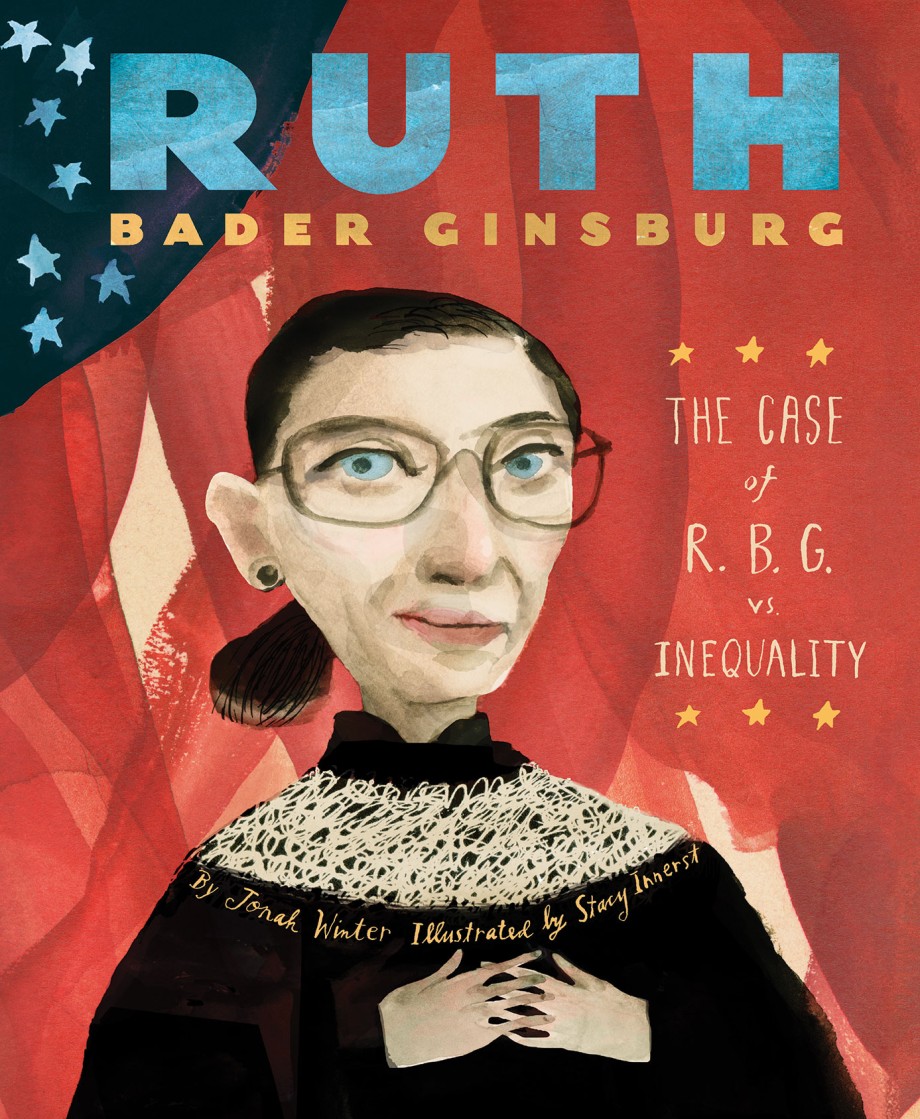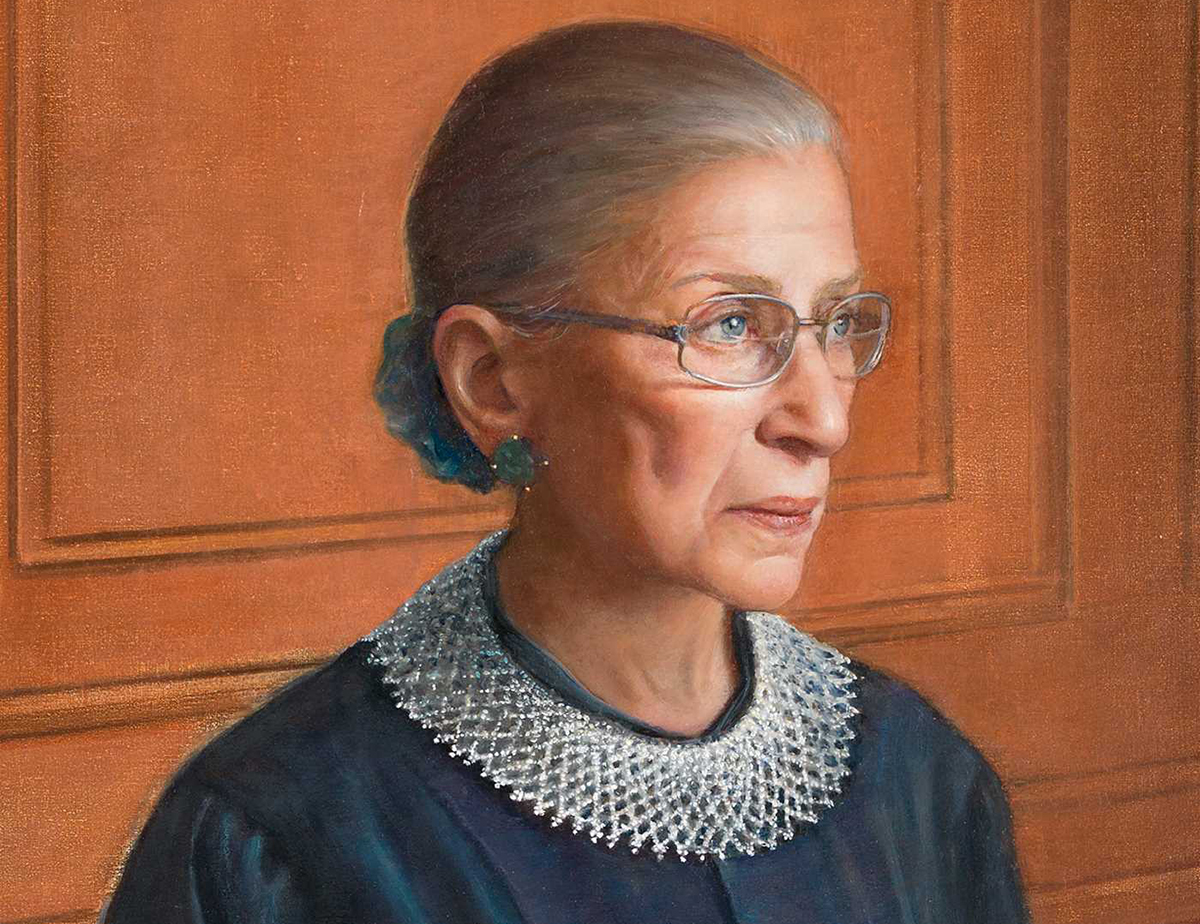Born: March 15, 1933
Brooklyn, New York
American Supreme Court justice and lawyer
Ruth Bader Ginsburg Facts
Ruth Bader Ginsburg Biography Ruth Bader Ginsburg, an American lawyer and jurist, is famous for being a trailblazer and champion for equal rights for women. She has served on the U.S. Supreme Court since 1993. She was born in a working class neighborhood of Brooklyn, New York in 1933. Justice, Justice Thou Shalt Pursue: A Life's Work Fighting for a More Perfect Union (Volume 2) (Law in the Public Square) by Ruth Bader Ginsburg and Amanda L. Fairy tail dragon cry movie 1. Tyler Mar 16, 2021.
Ruth Bader Ginsburg. By Kerri Lee Alexander, NWHM Fellow 2018-2020. Affectionately called “R.B.G.” by her supporters, Ruth Bader Ginsburg has inspired generations of women to break gender barriers. Even after facing gender discrimination as she pursued her academic goals, Ginsburg forged ahead and became the second woman-and first Jewish woman-to serve on the Supreme Court. When Ruth Bader Ginsburg began her career as an attorney, America's courtrooms and law firms were virtually all-male preserves. Female attorneys were a rarity, female judges were almost unheard of, and in many states women were routinely dismissed from jury duty. As one of the few women studying at Harvard Law School in the 1950s, Ruth Bader Ginsburg was asked to justify taking a place in the.
Ruth Bader Ginsburg is the second woman ever to sit on the United States Supreme Court and is known as the legal architect of the modern women's movement. She, more than any other person, pointed out that many laws encouraged gender discrimination; that is, they led to better treatment of men than women instead of guaranteeing equal rights and opportunities to all as was intended by the United States Constitution.
The search for equality in the law begins
Ruth Joan Bader was born March 15, 1933, to Nathan and Cecelia (Amster) Bader in Brooklyn, New York. Her mother was a role model in Ruth's life at a time when women had to fight for the privileges and rights that men took for granted. 'I pray that I may be all that she would have been had she lived in an age when women could aspire [seek to reach a goal] and achieve and daughters are cherished as much as sons,' the New York Times quoted Ginsburg as saying of her mother after she was named to the Supreme Court. Cecelia Bader had once hoped to attend college but instead went to work in a garment factory to help pay for her brother's education. This was a sacrifice many women made in the early decades of the 1900s.
Ruth Bader loved to read and learn. Her interest in the law started in grade school, when she wrote articles for her school newspaper about the Magna Carta, a document that represented the first step toward freedom in English-speaking lands. She attended Cornell University, where she graduated with high honors in government. She then married Martin Ginsburg, a law student. She went on to Harvard Law School, where she served on the Law Review.
In the male-dominated world of law, Ruth Bader Ginsburg was told that she and her eight female classmates—out of a class of five-hundred—were taking the places of qualified males. She transferred to Columbia University after two years when her husband, who would become one of the country's top tax lawyers, took a job in New York. Here she continued to encounter gender discrimination; although she graduated at the top of her class, law firms, which normally welcome talented graduates, refused to hire her.
Teaching and practicing law
After working for District Judge Edmund L. Palmieri in New York, Ginsburg joined the faculty of Rutgers University, where, in order to keep her job, she wore overly large clothes to hide the fact that she was carrying her second child. She was only the second female professor at Rutgers and one of only twenty women law professors in the country. In 1972, after teaching a course on women and the law at Harvard University, she was appointed the first female faculty member in the law school's history.
Ginsburg also served as a lawyer for the American Civil Liberties Union (ACLU), an organization that works to protect and ensure the constitutional rights of all persons and groups. She devoted most of her attention to

Reproduced by permission of the .
After winning five of the six cases she argued before the Supreme Court, Ginsburg was named a judge on the United States Court of Appeals for the District of Columbia by President Jimmy Carter (1924–). She brought a cautious, thoughtful style to the court, and most people were pleased with her performance. Conservatives, who for the most part like things to stay as they are, agreed with her view that courts should only interpret laws and leave their creation to politicians. On the other hand, liberals, or people who are usually more open to change and reform, were pleased with her votes supporting broadcasting access to the courts.
Supreme Court justice


With the retirement of U.S. Supreme Court Justice Byron White (1917–) in 1993, President Bill Clinton (1946–) wanted a replacement with the intellect and the political skills to deal with the Supreme Court's top conservatives. He chose Ruth Bader Ginsburg. Court observers praised her commitment to the details of the law, her intelligent questioning of lawyers arguing before her, and her talent for using calm and sensible arguments to win over her fellow judges.
Listen to Chromatica by Lady Gaga on Deezer. Chromatica I, Alice, Stupid Love. Deezer chromatica lady gaga.
The Senate Judiciary Committee hearings to approve the choice of Ginsburg were unusually friendly. Committee Chairman Joseph Biden (1942–) said, according to the Boston Globe, that Ginsburg had 'already helped to change the meaning of equality in our nation.' Ginsburg was confirmed by the Senate in a vote of ninety-six to three, becoming the 107th Supreme Court Justice and its second female jurist after Sandra Day O'Connor (1930–). She was also the first justice to be named by a Democratic president since 1967. President Clinton said in a statement quoted by the Detroit Free Press, 'I am confident that she will be an outstanding addition to the court and will serve with distinction for many years.'
Women in the judiciary
Since taking office, Ruth Bader Ginsburg has written thirty-five significant opinions (formal statements written by a judge), two important concurring (agreeing) opinions, and three selected dissenting (opposing) opinions. Ginsburg was seen as a stronger voice in favor of gender equality, the rights of workers, and the separation of church and state (the belief that neither the church nor the government should have any influence over the other) than many of the other judges on the Supreme Court. In 1999, she won the American Bar Association's Thurgood Marshall Award for her contributions to gender equality and civil rights.
As more and more women became judges throughout the country, Justice Ginsburg gave former president Carter credit for changing the judicial landscape for women forever. Appearing at a program entitled Woman and the Bench at the University of Pennsylvania Law School, she said, 'He appointed women in numbers such as there would be no going back.' Ruth Bader Ginsburg deserves equal credit for surviving and fighting through the discrimination of the past to help bring about change.
For More Information
Ruth Bader Ginsburg Memorial
Ayer, Eleanor H. Ruth Bader Ginsburg: Fire and Steel on the Supreme Court. New York: Dillon Press, 1994.

Bayer, Linda N. Ruth Bader Ginsburg. Philadelphia: Chelsea House, 2000
Bredeson, Carmen. Ruth Bader Ginsburg: Supreme Court Justice. Springfield, NJ: Enslow, 1995.
Italia, Bob, and Paul Deegan. Ruth Bader Ginsburg. Minneapolis: Abdo & Daughters, 1994.
New York based publisher Simon & Schuster has announced in a press release that it will be publishing Justice Ruth Bader Ginsburg's memoir My Own Words in January 2017. According to the description in the announcement, the collection of Ginsburg's past speeches and writings will serve as a precursor to an upcoming biography on the second female Justice in America. Upon opening the memoir, readers will first flip to an introduction written by Bader Ginsburg herself. From there, biographers Mary Hartnett and Wendy W. Williams will introduce each of the following chapters, which are projected to include Bader Ginsburg's past quotes and interviews on a variety of topics close to Bader Ginsburg's heart and reflective of her career as an activist and Supreme Court Justice. Main talking points will include gender equality, the functioning of the Supreme Court, Jewish identity, opera, and the interpretation of the Constitution. RBG fans are surely hoping the memoir will kindly dedicate a section to her famous collection of lace jabots, as well, but that has yet to be confirmed.

Bader Ginsburg has held her seat as Supreme Court Justice for over 20 years. My Own Words, the first book she has written during her tenure, will present itself as an inspiring synopsis of her progressive stances, life lessons, and political knowledge. Simon & Schuster Vice President and Editorial Director Alice Mayhew released a statement on the publication's partnership with Bader Ginsburg.
Simon & Schuster is proud and thrilled to publish MyOwn Words by Justice Ginsburg in anticipation of her authorized biography. Justice Ginsburg is one of the most important and articulate legal thinkers and interpreters in the country. She is also a witty and engaged writer and speaker, and I am personally delighted to have another opera lover on board.
Bader Ginsburg has a long history of women's rights activism of which America should be incredibly proud. In the 1970s, she was the first female professor to be hired with tenure at Columbia University School of Law. While teaching law courses, she simultaneously worked for the American Civil Liberties Union, where she helped found the Women's Rights Project and advocated for Congress' passing of the Equal Rights Amendment. Ginsburg said she'd been taught from a young age to further equality and cherish independence.
My mother told me two things constantly. One was to be a lady, and the other was to be independent. The study of law was unusual for women of my generation. For most girls growing up in the '40s, the most important degree was not your B.A., but your M.R.S.
Once elected to the Supreme Court by former President Bill Clinton in 1993, Bader Ginsburg spearheaded historic strides towards equality for all Americans. Even then, during a 1993 Senate confirmation meeting, she strongly advocated for a woman's right to choose — a topic that is still heatedly debated today.
I said on the equality side of it, that it is essential to a woman’s equality with man that she be the decision-maker, that her choice be controlling. If you impose restraints, you are disadvantaging her because of her sex…. The state controlling a woman would mean denying her full autonomy and full equality.
Ginsburg has consistently fought for these rights. In early March, the Supreme Court heard a case against a Texas abortion law that allegedly limits the availability of abortion clinics to women in the state. Pro-choice women are counting on Ginsburg to oppose the law and, once again, stand up for what she believes. When it comes to furthering women's rights, Bader Ginsburg is an icon.
